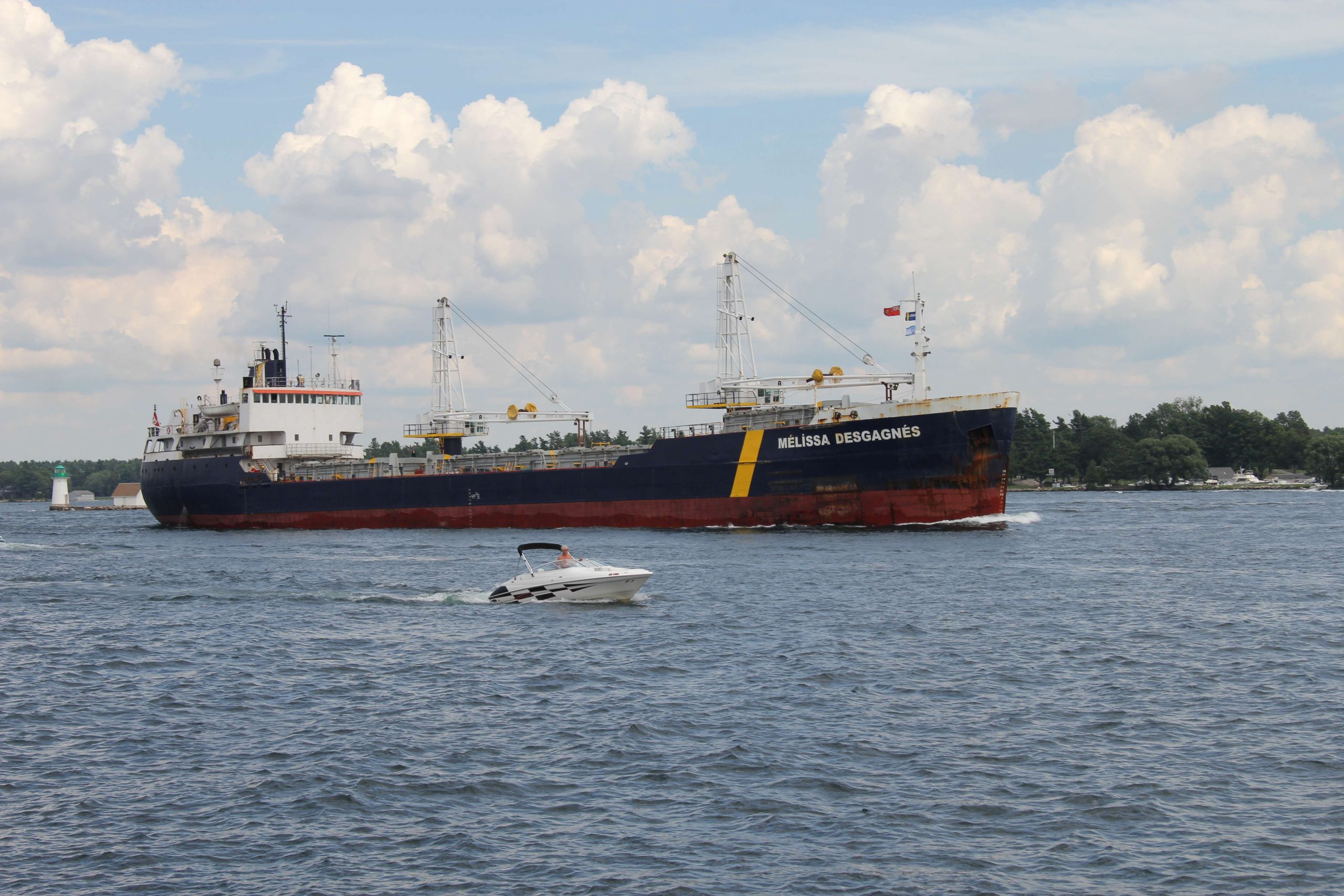
During the Day 1 coverage of the SiteOne Bassmaster Elite at St. Lawrence River, Emcee Dave Mercer offered a memorable observation from his morning of on-the-water reporting: “I watched Elite angler Ray Hanselman catch one of his better fish while surfing a 5-foot wave.”
Hold on a second. Wasn’t Day 1 pretty calm? Yeah, it was. And isn’t the St. Lawrence River, where Hanselman fished, typically calmer than the more exposed waters of Lake Ontario, which is also open to competitors? Yep.
So, what gives? Why the big wave?
Well, change one letter and you have the answer. Replace “wave” with “wake” and we’ve accurately redirected the focus from meteorology to shipping.
In addition to other recreational vessels of fishing, sailing, or water skiing purpose, Bassmaster Elite competitors frequently share the waters with much larger vessels hauling a diverse array of commercial goods.
According to the Great Lakes Seaway Partnership, the five Great Lakes, their connecting channels and the St. Lawrence River form one of the world’s longest deep-draft navigation systems. For more than two centuries, this waterway has played a critical role in the region’s economy, with many of North America’s largest cities owing their existence to flourishing commerce between major ports.
The SLSP tells us the modern-day shipping sees more than 160 million tons of waterborne cargo moving within the region or to overseas destinations. More than 25 shipping companies operate on these waters, with the largest vessels capable of transporting more than 70,000 tons of cargo in a single voyage.
Notables:
Vessel Types: Each commercial vessel displays a unique name, but local vernacular utilizes a colloquial classification system.
• Salty — Larger, more robustly designed ships made for trans-oceanic voyages. These are usually multipurpose vessels, which can transport bulk cargo, break bulk cargo, and project cargo.
• Laker — Built for use within the Great Lakes/St. Lawrence system, these vessels carry bulk cargo and have a unique configuration capable of fitting through the navigation locks. Lakers are designed to operate under the weather and fresh-water hydrologic conditions in the Great Lakes.
Vessel Flag: The GLSP describes three specific vessel operator communities:
• U.S.-Flag Operators — Companies whose vessels are documented under U.S. laws, usually operating between U.S. ports within the great lakes.
• Canadian-Flag Operators — Companies with vessels documented under Canadian law. Typically operating between lower St. Lawrence River ports and Great Lakes ports, these vessels carry domestic and bi-national commerce.
• Foreign-Flag Operators — Companies whose vessels are documented under the laws of a country other than the U.S. or Canada. These ships operated between Great Lakes/St. Lawrence River ports and overseas destinations.
Recreational fishing boats are allowed to utilize navigational channels but must yield right of way to commercial vessels that are unable to operate outside of these lanes.

